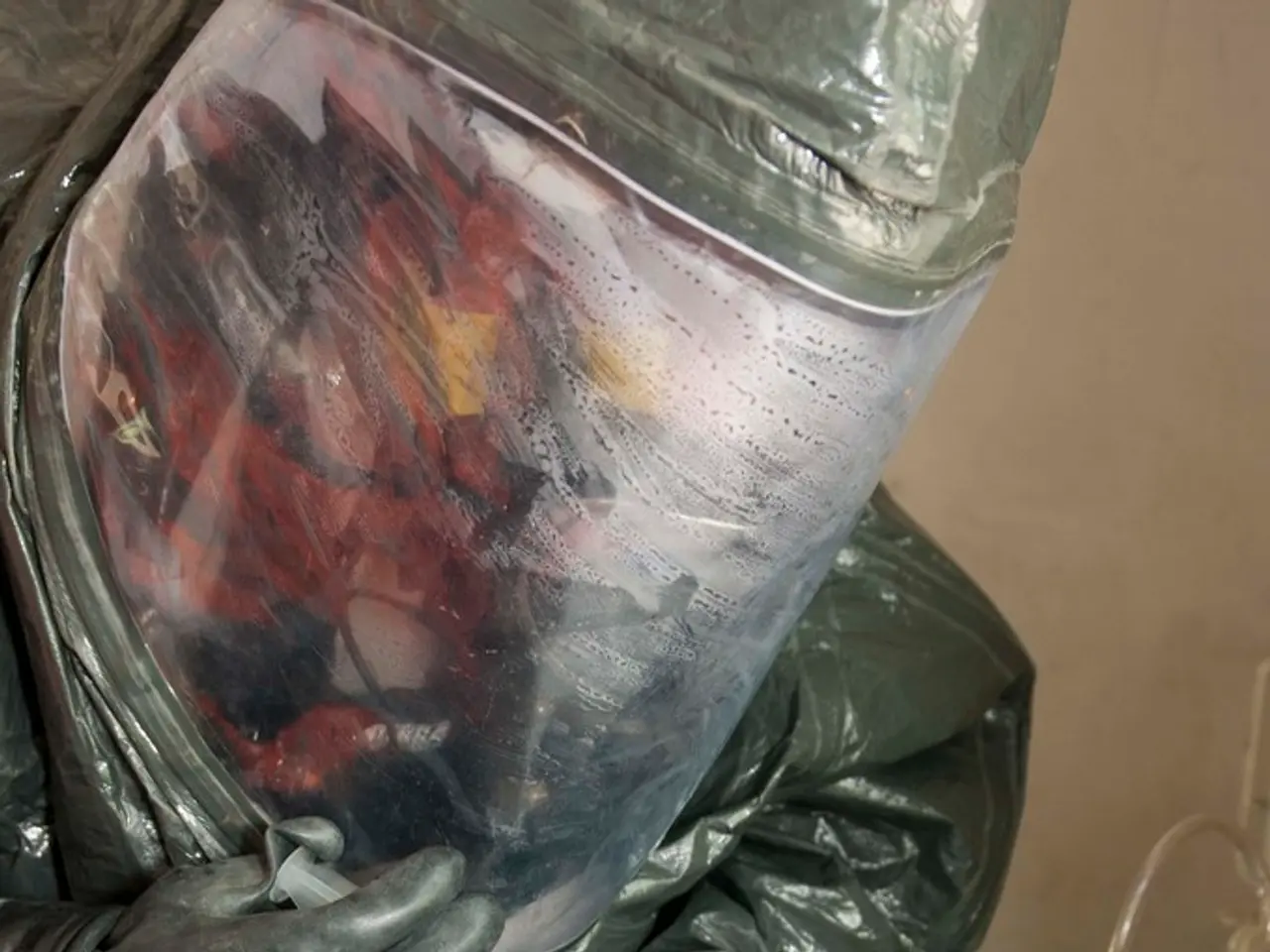Equipment for Fitness Instructors and Oversight Personnel: Respirators
===============================================================================
In the bustling world of the green industry, workers are frequently exposed to hazardous airborne particles, dust, vapors, and gases. To safeguard their health, a variety of respirators are employed, each with its unique filtration efficiency, design, and protection level. However, the safe use of these respirators relies heavily on proper selection, fit-testing, and adherence to safety practices.
Types of Respirators Used in the Green Industry
- N95 Disposable Filtering Facepiece Respirators
- These respirators filter at least 95% of airborne particles ≥0.3 microns.
- Assigned Protection Factor (APF) of 10 when properly fit tested.
- They are commonly used for protection against particulate matter such as dust, pollen, and some bioaerosols prevalent in landscaping, gardening, and agriculture.
- Ideal for low to moderate particulate exposure environments.
- Elastomeric Half-Mask and Full-Face Respirators
- These reusable masks have replaceable filters or cartridges for particulates (e.g., P100 filters) and gases/organic vapors.
- The APF ranges from 10 (half-mask) up to 50 (full-face).
- They are suitable for environments with chemical pesticide use, herbicides, or tasks involving organic vapors and dust.
- Powered Air-Purifying Respirators (PAPRs)
- These respirators use a battery-powered blower to filter air through cartridges and deliver clean air via a loose-fitting hood or tight-fitting mask.
- The APF ranges from 25 to 1000 depending on design.
- Ideal for users unable to pass fit tests due to facial hair or needing comfort for extended wear.
- Useful in environments with high chemical exposure or where prolonged respiratory protection is needed.
- Supplied Air Respirators (SARs) and Self-Contained Breathing Apparatus (SCBA)
- SARs supply clean air from an external source, while SCBA systems have independent air tanks.
- Mostly used in high-risk pesticide application or confined space work involving hazardous chemicals.
Respirator Safety Practices and Fit-Testing
- Proper Respirator Selection: Ensure the respirator type matches the hazard type—particulate, gas, or vapor—and exposure level.
- Fit-Testing: Mandatory to confirm a proper seal and adequate protection; typically includes qualitative (sensory detection) or quantitative (machine measurement) tests. Fit-testing is critical for tight-fitting respirators and should be performed annually and whenever facial structure changes occur.
- Seal Checks: Each use requires a user seal check to detect leaks before work begins.
- Comfort and Maintenance: Choose respirators that balance protection with comfort, especially for long shifts (consider breathability, weight, communication features). Elastomeric and PAPR respirators require regular cleaning, inspection, and filter/cartridge replacement per manufacturer recommendations.
- Training and Awareness: Workers must be trained on proper donning/doffing procedures, limitations of the respirator, and actions to take in case of discomfort or equipment failure.
- Regulatory Compliance: Follow OSHA and other relevant standards governing respirator use, maintenance, and record-keeping.
In conclusion, the green industry employs N95 disposable respirators, elastomeric half/full-face respirators, PAPRs, and occasionally supplied air respirators depending on the hazard. Safe use requires selecting the right respirator for the hazard, fit-testing to assure sealing, regular maintenance, and comprehensive user training to ensure effective respiratory protection.
Read also:
- Is it advisable to utilize your personal health insurance in a publicly-funded medical facility?
- Dietary strategies for IBS elimination: Aims and execution methods
- Benefits, suitable dosage, and safety considerations for utilizing pumpkin seed oil in treating an overactive bladder
- Harmful Medical Remedies: A Misguided Approach to Healing




